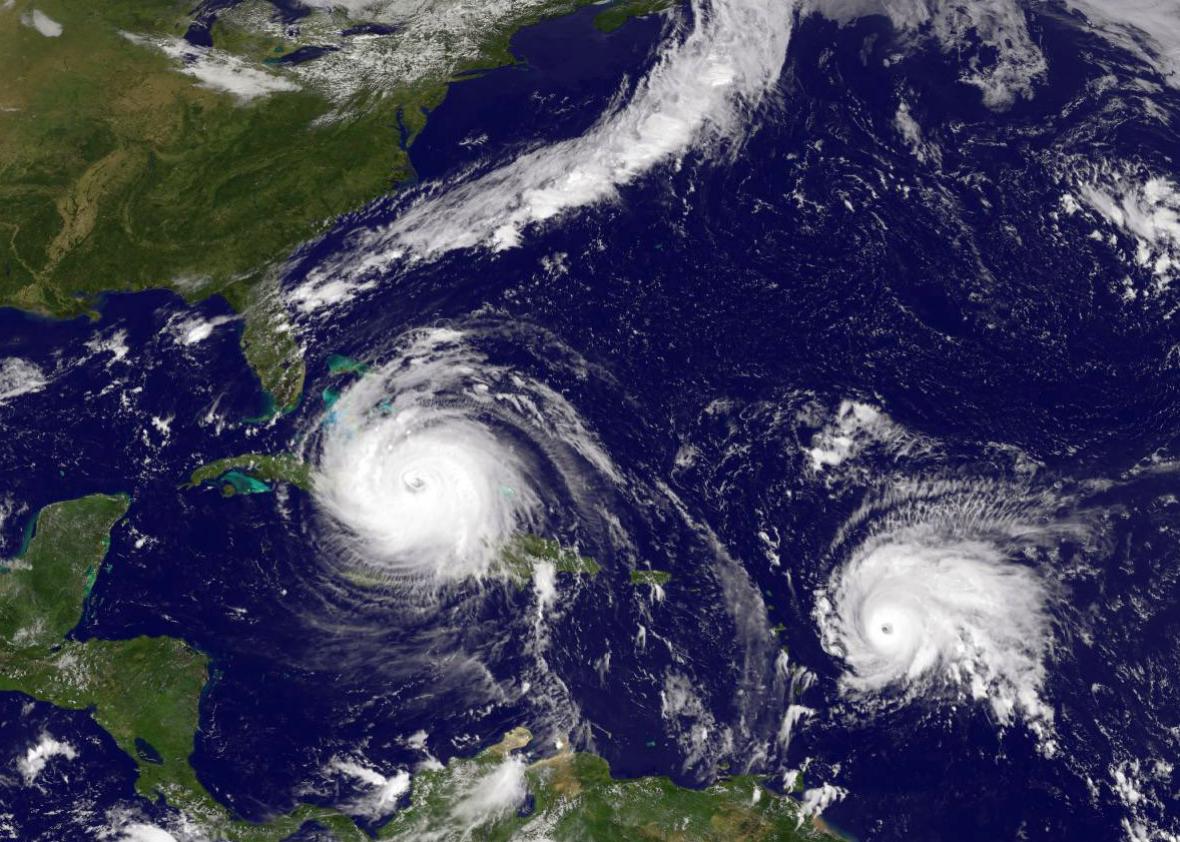“One estimate states an astonishing $190 billion to repair the houses, infrastructure and the petrochemical plants around Houston. ”
Over the summer, a stream of hurricanes have made their way through the Caribbean and contiguous US, causing devastation in their wake. These storms have given an unrelenting torrent of weather over some islands, and left many without homes or water. What has defined this hurricane season from previous ones is the intensity, as well as the number of Category 4 hurricanes. With what seems like a bad year for tropical storms, will this become the new norm as climate change continues?
Since 17th August 2017, there have been two Category 5 hurricanes, the highest category on the Saffir-Simpson scale. The tropical cyclone season of 2017 will potentially be the worst on record since 1893, as there have been eight consecutive hurricanes in the Atlantic Basin from August 9th to September 29th.
The eight biggest hurricanes this year include Franklin, Gert, Harvey, Irma, Jose, Katia, Lee, and Maria. Both Harvey, Irma and Maria made Category 4 or higher landfall in the US, marking the first time that has happened in a single hurricane season. Due to the volatility of these hurricanes, the names may be retired from future use.
Hurricane Harvey made landfall in the US from 25th August- 3rd September. Although it may not be as deadly as Hurricane Katrina back in 2005, it may be as costly, if not more so, in damages to Houston, Texas. One estimate states an astonishing $190 billion to repair the houses, infrastructure and the petrochemical plants around Houston. Hurricane Irma was even more destructive, with the path running through the Caribbean and destroying houses until it reached Florida and made its way to South Carolina. What was notable about the 800-mile-wide storm was that warm water at depth allowed the hurricane to maintain its speed and direction, allowing an unprecedented storm surge in Miami and several other major cities.
Hurricanes arise from the formation of a disturbance over a warm area of ocean which can then develop into a tropical depression. This depression can build up into a tropical storm which can then progress into a hurricane if the wind speeds reach 74 mph or more. The two main characteristics necessary for a hurricane to form are warm water and a consistent wind speed which doesn’t alter with direction. Ocean water must be at least 26°C, which allows energy to build up. This, combined with a low vertical wind shear (how much the wind direction or speed changes with height), allows a hurricane to form.
The path of a hurricane relies upon the global winds, such as trade winds from the East which move the hurricane from the Atlantic to make landfall in the south of the US, or in the Caribbean. The prevailing wind around a hurricane is known as the environmental wind field. This can determine whether the hurricane makes landfall or if it dissipates in the North Atlantic Ocean. High pressure systems such as the Bermuda High can alter the path of a hurricane and force it into a more northerly trajectory.
October may still see a large number of hurricanes, and with the season officially ending on November 30th, 2017 could be one of the most catastrophic years on record. Climate change is difficult to put into the context of hurricanes, but the US Climate Science Special Report acknowledged that if there are warmer global temperatures, this could lead to formations of more tropical cyclones, which could then potentially become hurricanes. A warmer global atmosphere will also allow more rainfall, just like what we have seen during hurricane Harvey. As hurricanes rely on warm water, this could be a key factor in determining the strength of future hurricanes. Surface water is becoming warmer, which allows storms to grow and maintain the strength of wind. This means that a hurricane can hit landfall with a higher intensity, leading to more devastation to the Gulf of Mexico or the Caribbean islands. With an increase in the destruction that these hurricanes may cause, the building of sprawling, low-lying houses throughout cities in the Caribbean and US means that they will remain unprotected from hurricanes.
Climate change will lead to unfamiliar weather patterns and lead to an unpredictability of weather, especially in hurricanes, where the intensity may not be known. There could be many stronger tropical Atlantic storms in the future, which would rock the small islands of the Caribbean. The island of Barbuda was fully evacuated during hurricane Irma, leaving the island uninhabited for the first time in 300 years following the storm.
Although Donald Trump acknowledged the devastating power of Irma and Harvey, he has not changed his long-standing view on climate change. Trump argues that the US has had bigger storms than these and that storms of the 1930s and 40s were equally, if not more, devastating. If the Trump administration does not alter its view- point, the people living in US areas affected by hurricanes may just have to prepare for worsening weather in the future, as climate change is all a ‘hoax’ according to President Trump.
Kira Knowles

